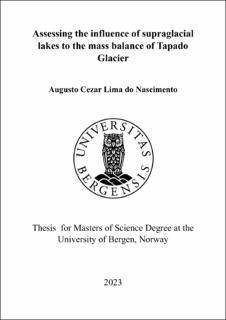| dc.description.abstract | Glaciers are an important source of water for agriculture, mining and large population residing in downstream basins in the semiarid Andes. The Tapado Complex (2.44 km2) is the main glacier in the catchment Coquimbo-La Serena, thus estimations of ablation rates, area extent, surface lowering, as for glacier inventories, etc. have been strategical for government policies and actions. In order to estimate the longevity of these water stores, it is important to understand the components and systems that play a central role in governing the mass balance. Supraglacial ponds and ice cliffs are of pivotal importance in debris-cover glacier wasting, producing what is called “debris-covered glacier anomaly”, it refers to an unexpected behavior when glaciers covered with debris exhibits a mass balance like that of a clean ice glacier, typically attributed to those features that can influence melting patterns. Although the Centro de Estudos Avanzados de Zonas Áridas (CEAZA) has been exploring the cryosphere in the Tapado Complex in the later years with excellence, nor extensive publications have been made with focus on debris-cover glacier components or the usage of unmanned aerial vehicles (UAV) has been properly used in advantage until the latest years. The current study aims to build an inventory of supraglacial ponds and ice cliffs using a combination of aerial photography, high resolution space-born remote sensing and UAV survey from 1956 to 2023, for the purpose of understanding and estimate supraglacial ponds and ice cliffs influence to the surface elevation changes in the Tapado Glacier, using a combination of digital elevation models from tri-stereo satellites and aero photo, and 3D models generated with structure-from-motion photogrammetry acquired from UAV survey. The current study found that ponds and cliffs have consistently occupy more than 1.15% of debris-covered area since 2000 and are likely to develop in zones > 2° & < 14° surface gradient and < 1.5 ma-1 surface velocity. The study found that ice cliffs significantly impact lowering rates within a 15-meter radius, leading to an increase in lowering rates up to -0.48 ± 0.32 ma-1. This showcased increase is ~6.53 times higher than the lowering rates observed in the debris-cover glacier. The present study identified a 2.93% omission in surface lowering, derived from tri-stereo satellite photogrammetry, within a single ice cliff. Therefore, the utilization of UAVs is recommended to attain more precise results that closely reflect changes in the Earth's surface. | |
